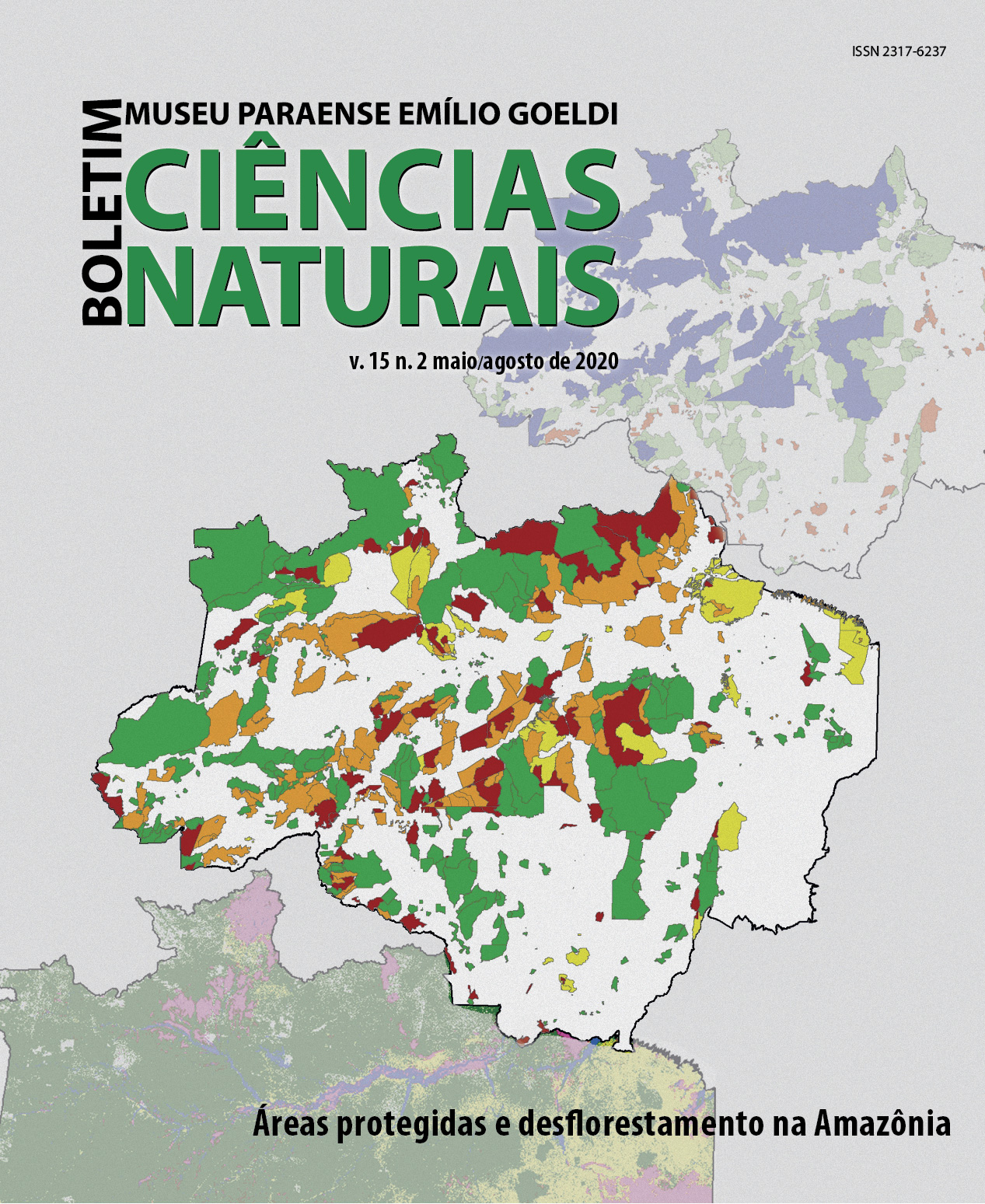Wild birds bred in captivity in the city of Eirunepé, middle Juruá river, southwestern Brazilian Amazonia
DOI:
https://doi.org/10.46357/bcnaturais.v15i2.189Keywords:
Animal breeding, State of Amazonas, Pets, Wild bird breedersAbstract
In this study, we conducted a survey of captive wild birds and the way to raise and keep these animals in the city of Eirunepé, Amazonas, Brazil. We used two data collection methods: a random selection of streets to be sampled and a number of breeders indicated by informants. We registered 142 birds belonging to 15 species of Psittacidae, Rallidae, and Thraupidae. The three species with the highest percentages of registrations were Sporophila angolensis (34.5%, n = 49), S. lineola (33.8%, n = 48), and Amazona festiva (9.2%, n = 13). The raising methods observed were: cages (84.51%, n = 120), released in the vicinity of residence (9.15%, n = 13), and tied at the tarsus (6.34%, n = 9). Of the registered species, only S. cf. maximiliani is critically endangered with extinction. We conclude that the keeping of captive birds in Eirunepé is largely restricted to passerines and that they are raised as pets, for singing and fighting contests or rehabilitation. Furthermore, different kinds of birdkeeping may vary according to the size of individuals. It is essential that breeders have knowledge about the proper ways of breeding and how to obtain wild birds legally in Brazil.
Downloads
Published
Issue
Section
License
Publication means fully assigning and transferring all copyrights of the manuscript to the journal. The Liability Statement and
Assignment of Copyrights will be enclosed with the notice of acceptance. All the authors must sign the document and return it to the journal.






